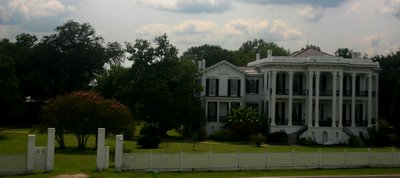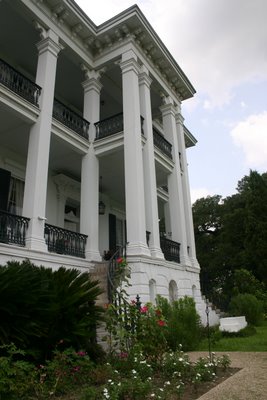Eleven:
For Halloween I am doing the stereotypical thing and posting photographs of cemeteries. However, I have always loved cemeteries and it is a personal belief that photographs taken in such places should be black and white. To me, it reflects the nature of a cemetery, a somber respect for those who have gone before, and those who mourn them. This first photo clues you in to where these photos were taken. This photo is not in black and white because I like the color of the plaque, and I figured I escaped my personal morals because it is not of the actual interior of the cemetery.

This is one of the most photographed markers in the New Orleans area cemeteries. It was apparently erected by the family of a little girl and it does reflect the sadness of the family that she was unable to live.

This is something that I find interesting. These are public tombs, you were buried here if you could not afford to pay for a private tomb. Also, if you did buy a private, or family, tomb, you could pay the church (Catholic) a certain amount and have a 'perpetual care' plaque placed on it. What that meant was that the church would always maintain the tomb, even if your family members did not. If ever there was a doubt in your head about the city of New Orleans sinking, this photograph should erase such thoughts. The bottom row is over half-way covered by the ground and it is sinking crookedly, also, there is no telling if there is another row of tombs under the third row. Over a hundred years and look how far it has sunk. It brings into sharp reality why the New Orleanians have to bury their dead above ground.


This is one of the most photographed markers in the New Orleans area cemeteries. It was apparently erected by the family of a little girl and it does reflect the sadness of the family that she was unable to live.

This is something that I find interesting. These are public tombs, you were buried here if you could not afford to pay for a private tomb. Also, if you did buy a private, or family, tomb, you could pay the church (Catholic) a certain amount and have a 'perpetual care' plaque placed on it. What that meant was that the church would always maintain the tomb, even if your family members did not. If ever there was a doubt in your head about the city of New Orleans sinking, this photograph should erase such thoughts. The bottom row is over half-way covered by the ground and it is sinking crookedly, also, there is no telling if there is another row of tombs under the third row. Over a hundred years and look how far it has sunk. It brings into sharp reality why the New Orleanians have to bury their dead above ground.










